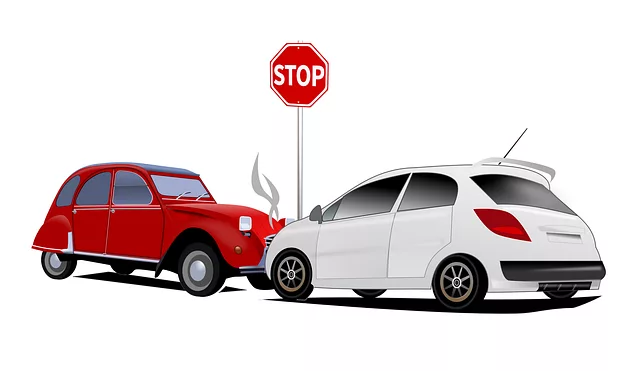SR-22 insurance is a mandated form of financial protection for new drivers, required by most states to ensure road safety. It covers medical expenses and property damage costs up to specified limits, providing peace of mind and financial security in case of accidents involving inexperienced drivers. Despite higher initial premiums due to risk assessments, SR-22 insurance ensures adequate financial responsibility. Navigating the application process involves preparing documents, filling out forms accurately, and submitting them for approval. New drivers should compare offers, understand policy details, and maintain responsible driving behavior to improve rates over time.
For new drivers, navigating the world of insurance can be daunting. Understanding SR-22 insurance is crucial for ensuring legal compliance and managing rising costs. This comprehensive guide delves into the essentials of SR-22, explaining its purpose and impact on young drivers’ budgets. We’ll walk you through the application process, help avoid common pitfalls, and offer insights into building a solid insurance profile after acquiring this essential coverage. By understanding SR-22 insurance, new drivers can make informed decisions to protect themselves on the road.
Understanding SR-22 Insurance Requirements for New Drivers

For new drivers, navigating the world of insurance can be a challenging task, especially when it comes to understanding SR-22 requirements. SR-22 insurance is specifically designed for individuals who have been involved in traffic violations or accidents, often resulting in a suspended driver’s license. This type of insurance serves as proof of financial responsibility and ensures that the driver can legally operate their vehicle on public roads again.
When you’re a new driver facing this requirement, it’s crucial to grasp that SR-22 insurance is not just about meeting a legal mandate; it also provides protection for both the driver and others on the road. The policy guarantees that if any future accidents occur, medical expenses and property damage costs will be covered up to specified limits. This safeguard ensures peace of mind and financial security for all parties involved.
What is SR-22 and Why Is It Necessary?

SR-22 insurance is a specific type of financial protection required by law for new drivers, particularly those in their initial years of licensing. It serves as a proof of financial responsibility and ensures that the driver can cover potential damages in case of an accident. This form of insurance is mandated by most states to ensure road safety and provide a financial safety net for victims of vehicular accidents.
The necessity of SR-22 arises from the fact that new drivers, due to their lack of driving experience, are often seen as higher risk by insurance companies. As a result, they may face higher premiums or even difficulty in securing coverage. To mitigate this risk and ensure a stable insurance market, governments have made it mandatory for these drivers to carry SR-22 insurance, ensuring that they can pay for repairs, medical bills, and legal costs in the event of an accident.
The Impact of a First-Time Driver on Insurance Costs

For many new drivers, obtaining SR-22 insurance can feel like a significant financial hurdle. This is because insurance companies often view first-time drivers as higher risk, leading to higher premiums. Several factors contribute to this increased cost, including a lack of driving experience and a higher likelihood of accidents or claims. As a result, young drivers might find themselves paying substantially more for their coverage compared to more experienced counterparts.
However, it’s essential to remember that SR-22 insurance is not just about the initial cost. It provides vital protection for new drivers, ensuring they have the financial responsibility required to cover any damages or injuries caused in an accident. With careful driving habits and a clean record, insurance rates can improve over time, offering long-term savings despite the higher initial outlay.
Navigating the SR-22 Application Process

Navigating the SR-22 application process can seem daunting, but with a step-by-step approach, it becomes more manageable. First, ensure you have all necessary documents ready, including your driver’s license, proof of residency, and any previous insurance policies. Then, fill out the SR-22 form accurately, providing detailed information about yourself and your vehicle(s). This form is critical as it signifies your commitment to maintaining continuous insurance coverage, a requirement for high-risk drivers.
Once completed, submit the form to your insurance provider or the designated state authority. They will review it and, if approved, issue an SR-22 certificate, proving your compliance with the legal requirements. Remember that timely submission and accuracy are key to avoiding delays in obtaining this essential coverage for new drivers.
Common Pitfalls to Avoid When Obtaining SR-22 Insurance

When obtaining SR-22 insurance, new drivers should be aware of some common pitfalls to avoid. One major mistake is assuming that all SR-22 policies are created equal. Each provider may have different coverage options, deductibles, and exclusions, so it’s essential to compare multiple offers. Insurers also often try to upsell additional coverage that might not be necessary for a new driver, such as comprehensive or collision insurance, which can significantly increase costs without providing adequate protection.
Another common pitfall is neglecting to review the policy details carefully before signing. New drivers should understand their coverage limits, what’s included, and what’s excluded. They should also be aware of any waiting periods or limitations on certain types of claims. Additionally, it’s crucial to keep in mind that maintaining a clean driving record is vital for keeping SR-22 insurance rates low. Even minor infractions can lead to premium increases, so staying compliant with traffic laws is essential.
Building a Solid Insurance Profile After Acquiring Your SR-22

After acquiring your SR-22, one of the key aspects in building a solid insurance profile is demonstrating responsible driving behavior. This includes adhering to traffic rules, maintaining a clean driving record, and avoiding instances that could lead to claims. By doing so, you signal to insurance providers that you’re a low-risk driver, which can result in more favorable SR-22 insurance rates over time.
Regularly reviewing your policy and understanding its terms is another crucial step. SR-22 insurance is designed for high-risk drivers, and it’s essential to know the specific coverage limits and exclusions. As you gain driving experience and improve your safety record, consider upgrading your policy or switching providers to find better rates that align with your responsible driving profile.
